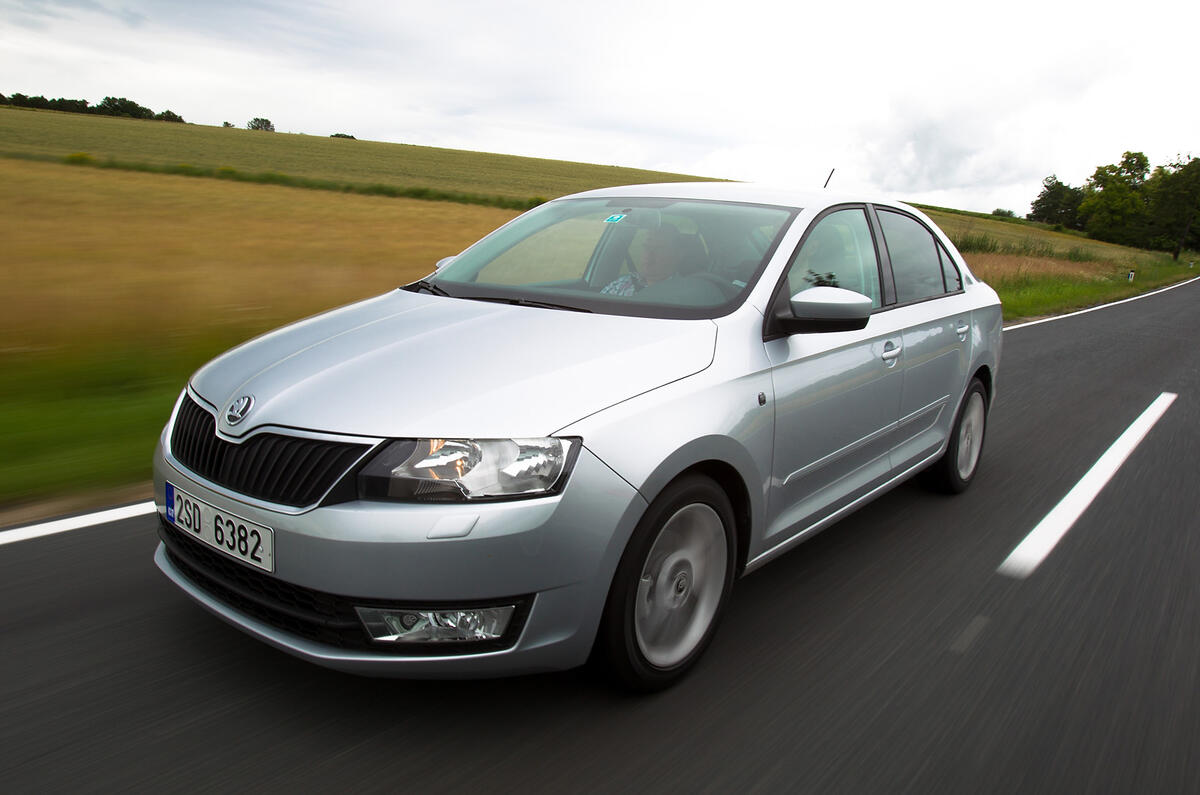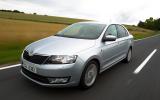What is it?
This is Skoda’s new Rapid hatchback, which slots into the company’s range between the Skoda Fabia supermini and the established Skoda Octavia range. The Rapid, which will also be made in bespoke versions for India and China (which gets a saloon body and rather more chrome trim), has been conceived as the conspicuous value model in the Skoda line-up. It also introduces Skoda’s new design language and corporate grille design.
The arrival of the Rapid is part of the brand’s aim to sell 1.5m cars globally by 2018. Last year, Skoda shifted an impressive 880,000 vehicles but that leaves it trying to nearly double its output in just seven years. What Skoda calls the ‘compact A-segment’ today accounts for 36 percent of the global automotive market, but the company predicts this will rise to around 50 percent by 2020.
The Rapid is very similar in concept to the original 1996 Octavia and the 1991 Seat Toledo. It is very long for a car of this class (4.48m) but relatively narrow (just 1.94m across the mirrors). The notchback styling disguises a huge hatch tailgate and giant boot which, at 550-litres, matches many executive saloons.
Skoda will not say what is under the Rapid, other than it is ‘time-proved technology’. It is most likely a mix of more than one VW components set, partly from the Polo. It gets McPherson struts upfront and conventional and very compact beam axle at the back - one of the reasons the boot is so deep. That the rear track is 37mm wider than the front, rather underlines the mix ‘n’ match nature of the architecture.
Unlike its VW Group predecessors, however, the Rapid doesn’t trade boot space for rear legroom. The 2.6m wheelbase of the ‘modular platform’ is marginally longer than the Mk1 Octavia and the rear legroom noticeably better. It also weighs around 150kg less than the first Octavia model, coming in at 1140kg for the base model. Six airbags, ABS and ESP are standard in Europe.
UK pricing will kick off at just £12,995 for the entry-level 1.2-litre, three-cylinder, 74bhp petrol engine but with British sales over six months away, Skoda UK isn’t giving any more clues on the likely pricing of the rest of the range until September, when the Rapid makes its public debut at the Paris motor show.
Aside from the entry-level engine, there will be five other EU5-rated engines to choose from, including 84 and 104bhp 1.2-litre four cylinder turbocharged petrol engine and a 121bhp 1.4 TSi petrol engine. There are two 1.6-litre TDI engines in 88bhp and 104bhp forms, though the former will not be available for 12 months.
Five-speed manual boxes are standard on all engines, apart from the most powerful 1.2 TSI. A 7-speed DSG ‘box is standard on the 1.4 TSi and optional on the lower-power diesel engine. In the UK, there will be three trim levels S, SE and Elegance Exact specification levels released at the same time as the prices.























Join the debate
Add your comment
Another Skoda bites the dust!
What a plain offering by skoda.
Rubbish to say the least.
The only reason people buy the cars due to their reliability and durability.
But this should not be the case anymore.
Style is now the thing with cars and all cars are becoming more durable and reliable nowadays.
So I believe Skoda is still behind.
Good to see a family-sized
Good to see a family-sized car that isn't excessively wide. Many cars in the Golf class have become too bloated to fit in to the average garage. I'd seriously consider this or the SEAT Toledo equivalent.
Skoda Rapid
I have recently bought a new Fabia 1.2 DSG and I must say it appears to be one of the best of the 66 cars I have owned.
Though not exciting enough to set the world afire!
I am, however, astonished that Skoda should bring out a 'new' model that is the same size as the old Octavia and looks very similar.
If it has the very clever bi-fold boot lid of the Superb it will be a winner inspite of it's boring looks.
Perhaps it should be called the 'VAPID' instead!
[quote= Perhaps it should be
[quote=
Perhaps it should be called the 'VAPID' instead!
/quote]
Alas I fear it may get a nickname of just that. One motoring journalist has observed that Skoda may be losing the plot versus the Koreans. He could well have a case